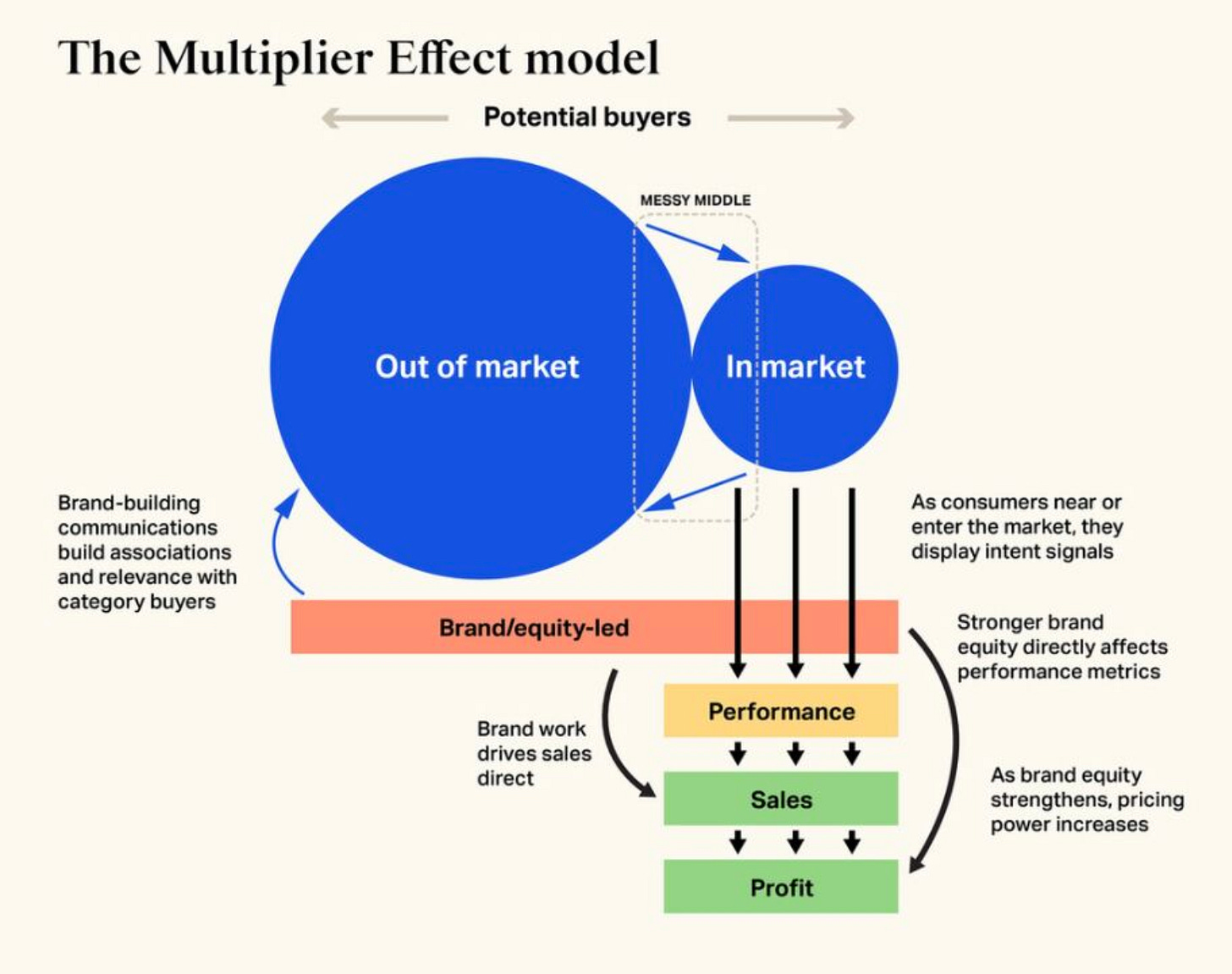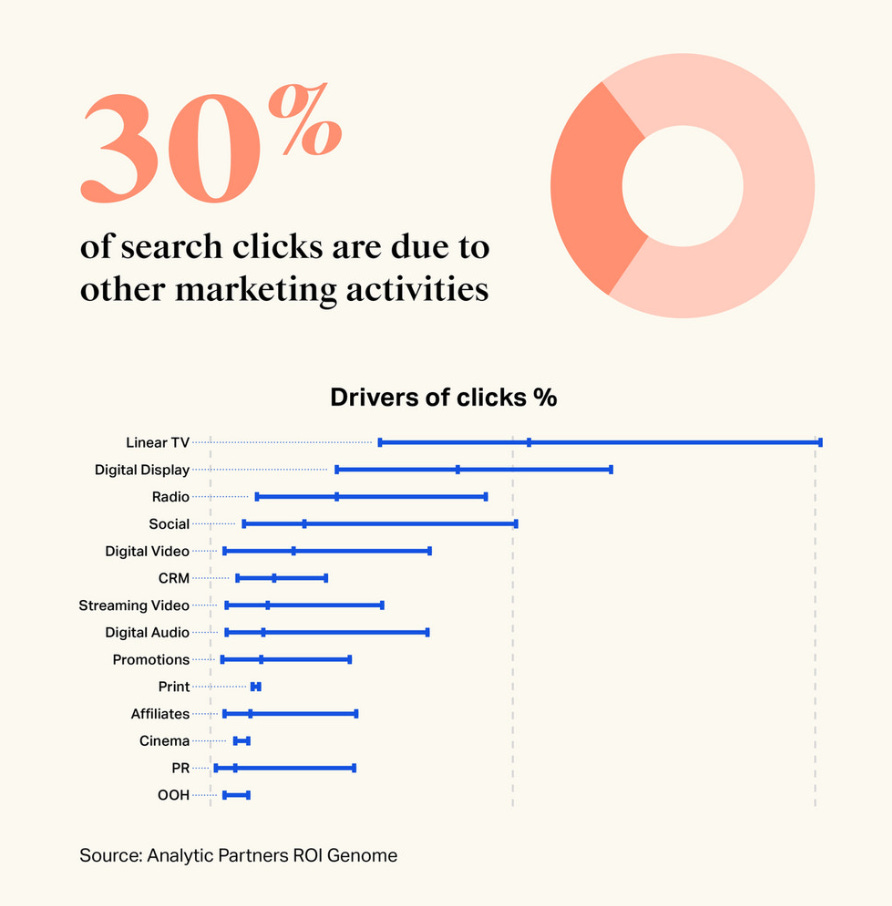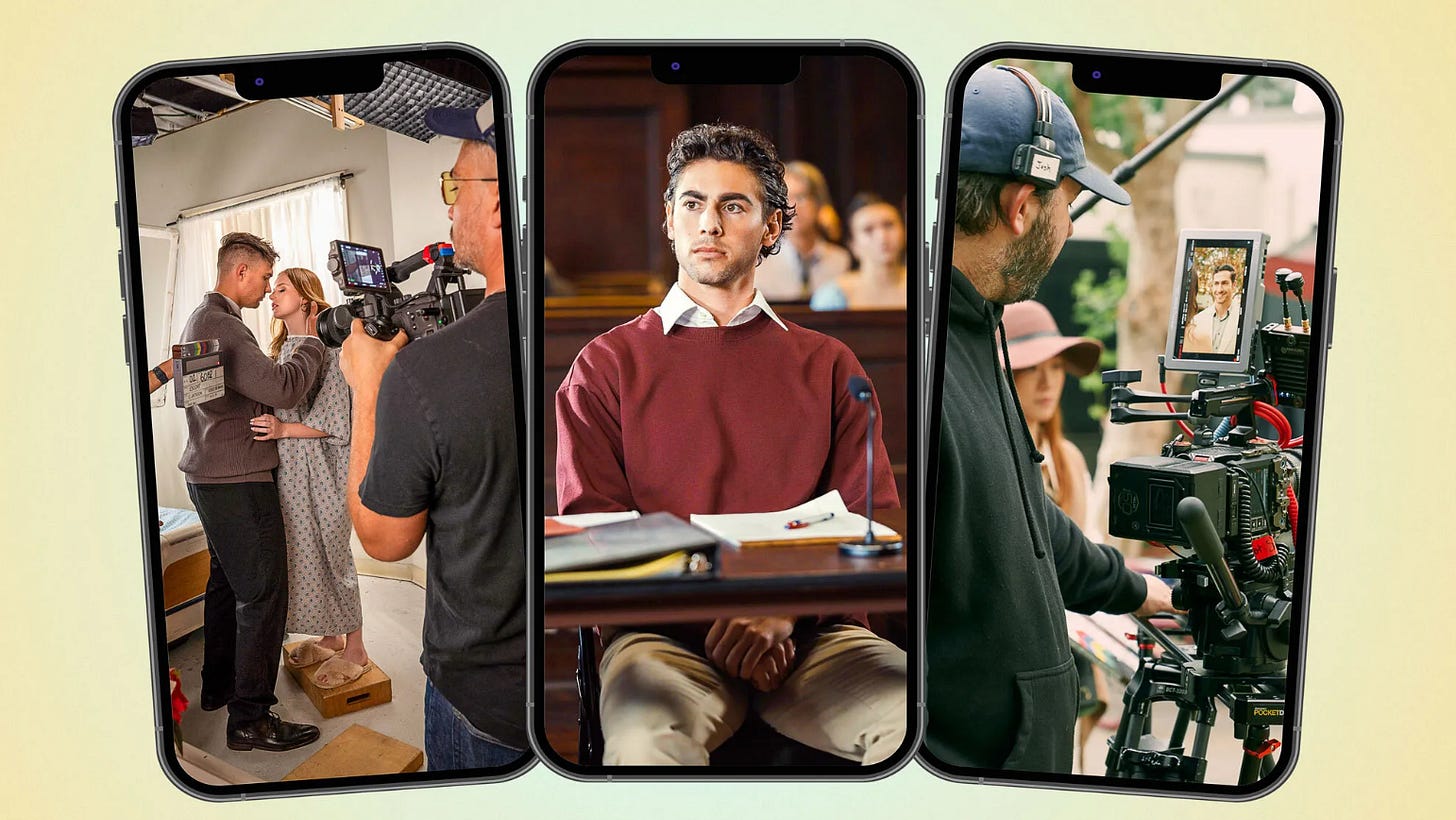SPN. 163: The Multiplier Effect of Brand + Performance
Plus, storytelling as a conversion funnel and not just awareness; plenty of jobs & opps
A very warm welcome to all the new subscribers. You’ve joined a community of over 3k marketing and fund raising operators at mission-driven Org’s. I’m thrilled to have you as readers and truly appreciate your feedback and support.
In this week’s SPN:
Do you want to understand how good your agency team is?
Vertical dramas are changing the way people watch. What Org’s can learn.
What if most of your Meta results would’ve happened anyway?
The entire pipeline of content creation, distribution, and monetization is changing.
And, plenty of really fab Jobs & Opps!
Big news 🎥 - Fundraise Up donation forms now support video.
You can embed YouTube or Vimeo links directly into your Checkout Modals and Campaign Pages, giving supporters a richer, more dynamic giving experience.
Whether it’s a live stream from the field or a pre-recorded message from your ED, video will help you connect emotionally and convert more effectively.
It’s easy to set up, mobile-friendly, and supports subtitles for accessibility.
Showing is better than telling.Game-changer? You know it is 🚀
P.S. We’re at Bridge this week. Come say hi!
The Multiplier Effect
Combining Brand and Performance has a multiplier effect on revenue, improving ROI by a median of 90%.

According to WARC’s excellent and recent Whitepaper, and designer of the graphic above, investment in Brand enables Performance advertising to become far more effective at converting prospective donors.
→ I can attest to this and confirm it directly led to lower Donor Acquisition Costs (CAC).
Plus there’s the added benefit as Brand Equity strengthens, our sector’s version of “Pricing Power” increases, which means you’re reducing the need for the wild 5X Matches that do the rounds in Q4.
While the benefits are clear to me now, operationalizing this at UNICEF presented challenges and I know while wearing my Performance Marketer hat I was often a blocker:
1️⃣ Selling the vision of long-term results (goal) to an Org focused on immediate gains (actual).
2️⃣ Defining cohesive brand and performance messaging and creative.
3️⃣ Overcoming the “two jobs” perception of advertising that often creates siloed workstreams.
The key is to view Brand and Performance not as separate entities, but as an integrated growth strategy led by the CMO. “Full funnel” mustn’t be a phrase only used in the boardroom for bonus points. The key word their is integrated.
Measurement

Let’s take it one step further, tap the digital display category (above) and use Meta as an example.
What if most of your Meta results would’ve happened anyway? Sounds uncomfortable. But it’s the right question.
Every fundraising operator should eventually ask:
👉 What is Meta actually driving?
👉 How many of these donations would’ve happened anyway?
Just because someone clicked or viewed an ad then donated it doesn’t mean the ad caused the donation.
Correlation isn’t causation. And attribution isn’t contribution.
So how do you know what it’s really doing? Turn Meta off and see what happens?
You could. But a scientific test would tell you more.
That’s what conversion lift is for.
A test group sees your ads. A control group doesn’t.
You measure the difference in outcomes.
It’s the gold standard for quantifying incremental revenue impact.
No attribution.
No clicks.
No A/B tests.
No models.
Just causal truth.
Every Org should run lift tests every 90 days at least. And Q3 is the time to start.
Here’s why:
✅ It shows what Meta, for example, is really driving
✅ It reveals how many donors would’ve donated anyway
✅ It helps calibrate your entire measurement stack
I saw an interesting stat that 62% of MMM advertisers now calibrate using lift (Kantar). Here’s a really good explainer - How Marketing Mix Modelling Works (and when it doesn’t).
Lift isn’t just for Meta.
Lift tests should be run on any significant spend. Search. TikTok. Programmatic. Your biggest brand and performance channels need to go under the lift microscope.
For many Org’s, that starts with Meta.
Do you want to understand how good your agency team is?
→ Ask them this question: How many Meta lift tests have you run in the last 90 days… what did we learn… and what are we doing differently today as a result? Many get stuck on the first question. In that case your strategy is flying without instrumentation.
Weekly Reads 📚
CMOs guide to brand building in the performance era (WARC)
‘A new space to play in’: can vertical dramas save the UK’s TV sector? (Guardian)
The New Consumer’s 2025 Mid-Year Trends Report (Dan Frommer)
Why Marketing Must Lead the Buyer Journey (IDC)
Behind the IAB Tech Lab’s New Initiative to Deal With AI Scraping and Publisher Revenue Loss (AdExchanger)
Netflix Uses AI Effects For First Time to Cut Costs (BBC)
OpenAI’s New ChatGPT Agent Can Control an Entire Computer and Do Tasks For You (The Verge)
Microsoft Touts $500M AI Savings (Bloomberg)
Gmail’s New Tab Is Made For Unsubscribing From Emails (The Verge)
How Google is managing to maintain revenue as search changes (LinkedIn)
McKinsey Technology Trends Outlook 2025 - covering 13 tech trends from AI to Compute and Connectivity and Cutting Edge Engineering
🎭 Vertical Dramas Are Changing the Way People Engage
First, the context: short-form, mobile-first vertical dramas - quirky experiments originating in China - are now a global entertainment phenomenon.
In 2023 alone, China produced over 18,000 of these serialized, bite-sized video stories, built for the 9:16 screen. What started on platforms like Douyin and Kuaishou is now shaping the future of storytelling from Mexico City to Seoul to Nairobi.
And it’s not just format that’s changing.
→ What interests me is it’s the entire pipeline of content creation, distribution, and monetization that’s changing.
Why This Shift is Real (and Massive)
94% of mobile use is vertical. People don’t rotate their phones. That’s friction.
Episodes are 1–2 minutes max. Think snackable, emotionally punchy beats.
20+ episodes per series. Designed to be binge-watched in a single scroll.
AI + audience data shapes stories in real time. Viewer drop-off points = rewrites.
Vertical dramas are engineered to meet people in moments of micro-attention: waiting for a subway, killing time before bed, between meetings. They deliver immediate emotional payoff and they’re algorithmically rewarded for doing so.
And if they’ve hit my desk then they must already be in the mass market and global:
🌍 Dubs and culturally adapted formats for every market.
🔊 Distributed natively on TikTok, Reels, and YouTube Shorts.
This isn’t the next Quibi. This content is working because it’s platform-native, mobile-native, and behavior-native.
What Does This Mean for Org’s?
I’ve long invested in storytelling but often in the form of polished hero videos and ads, 10-minute documentaries, or long-read impact reports. These formats still matter, but they’re not enough. I see it in how I consume content today. Not in a world where attention is fragmented and emotional resonance happens in under 30 seconds.
Here are 5 approaches I’m tinkering with:
Testing micro-episodic content: Breaking a campaign video into a 5-part vertical series, each with its own arc and soft CTA. Think “next episode” energy.
Reframing production mindset: Planning for vertical from the start. Shooting in 9:16, leading with emotion, and building for remixing and mobile sharing.
Using behavioral data to inform edits: If 60% of viewers drop off at 0:43, rewrite that scene. I’m trying to wear a builder hat, treating my comms like product teams build apps.
Localizing intentionally: Subtitles, dubs, accents, cultural nuance - these matter. One-size-fits-all video doesn’t work in a platform-native world.
Partnering with creators: I’m working with micro-influencers and mobile-native storytellers. Their followers trust them more than any logo.
It’s worth underlining that isn’t about replacing any legacy storytelling. It’s about adding a lightweight, high-impact layer that reaches your future and current supporters where they’re at - and how they scroll.
How to Capitalize
Let’s take an example that’s close to home for me, UNICEF. With its global presence, emotionally resonant mission, and embedded field teams, they’re actually perfectly positioned to test and scale vertical storytelling.
Here’s how:
Localized drama series: Imagine a short-form, 10-episode vertical drama following a child’s daily walk to school after a flood in Bangladesh. Or a sibling's journey to get vaccinated in rural Ghana. These aren’t just stories - they’re arcs. What’s yours?
Field-generated + studio-supported: Frontline workers already capture raw, authentic moments. Match that with lightweight post-production to shape micro-narratives, not just one-off clips.
Creator collabs: Partner with youth creators in local markets to co-produce episodes that blend entertainment and impact. Think K-dramas, but about clean water or girls’ education.
Data-driven iteration: Release episodes natively on TikTok and YouTube Shorts. Use real-time feedback to adjust pacing, visuals, or CTAs. If a video performs in Brazil but not in the UK, test dubs or creative hooks.
Action built in: Each episode can carry contextual CTAs: donate, share, learn more, subscribe. This is storytelling as a conversion funnel - not just for awareness.
This is where content and mission converge: fast-moving, emotionally resonant, culturally tuned. High-volume, low-friction storytelling that doesn’t dilute who you are and why your Org does what it does. Rather. It’s storytelling that multiplies reach.
Bottom Line:
Rather than a gimmick, the rise of vertical drama is a signal. It’s telling us something about how donors want to feel - and how quickly they need to feel it.
It’s still storytelling for the win. But format, speed, and feedback loops are the edge you need in order to differentiate, and bolster the growth of your donor file.
OK, that’s all for today.
I hope you’ve found one nugget today that you can put into play next week.
If you enjoyed this SPN, please consider sharing with your network. Thank you to those that do.
If a friend sent this to you, get the next edition of SPN by signing up below.
And huge thanks to this Quarter’s sponsor Fundraise Up for creating a new standard for donor experience that helps Org’s raise more money.
Now onto the fun stuff!
Jobs & Opps 🛠️
The Trevor Project: Chief Advancement Officer ($260,000 - $300,000)
Canadian Red Cross: Senior Digital Content and Strategy Specialist
World Central Kitchen: Manager, Community Fundraising & Engagement ($80,000 - $100,000)
Canadian Cancer Society: Senior Manager, Digital Fundraising ($76,000 - $114,000 CAD)
National Geographic Society: Director, Social Media ($137,000 - $145,000)
MS, I'mpossible: Director of Programs and Partnerships
IRC: Manager Mid-Level Giving ($70,000 - $72,000)
United Way: Director, Annual Giving ($140,000 - $160,000)
Columbia University: Senior Director, Global Impact Lab ($165,000 - $185,000)
Gates Foundation: Program Officer, Partner Outreach ($168,200 - $252,200)
→ Many more job opportunities listed on SPN’s sister site: Pledgr



